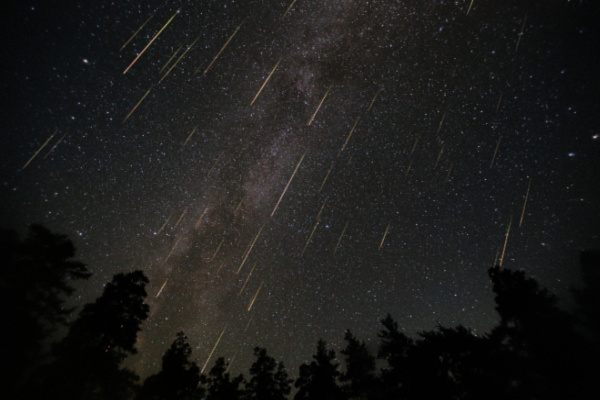Warm summer nights are numbered across North America with the start of autumn right around the corner, but there will be several notable night sky events for stargazers to enjoy before the arrival of meteorological fall on September 1.
Shortly before the midpoint of August, the dog days of summer will conclude. From July 3 through August 11, Sirius, known as the dog star, appears to rise and set with the sun. Some ancient peoples believed that the extra light from the bright star added to the heat of the day, and while the myth has been debunked, the nickname continues to live on.
One of the best and stargazer’s most anticipated meteor showers of the year will peak during the second weekend of August, presenting the perfect opportunity to spot shooting stars streaking across the sky. “The Perseids are the most popular meteor shower as they peak on warm August nights as seen from the northern hemisphere,” the American Meteor Society states.
Up to 100 meteors per hour may be seen from dark, cloud-free areas of North America as the annual Perseids peak on the night of Saturday, August 12, and peaking into the early morning of Sunday, August 13, according to skywatching site In The Sky.
While 2022 wasn’t a great year with the moonglow making it difficult to see the shower, 2023 is expected be a good year for the Perseids as the moon will only be 10% illuminated. On average, you can expect to see up to 100 meteors per hour during the Perseid’s peak, according to NASA.
According to Space.com, the Perseids are caused by Earth passing through debris — bits of ice and rock — left behind by Comet Swift-Tuttle which last passed close to Earth in 1992. The Perseids peak when Earth passes through the densest and dustiest area on Aug. 11-12. Years without moonlight see higher rates of meteors per hour, and in outburst years (such as in 2016) the rate can be between 150-200 meteors an hour.
A typical Perseid meteoroid (which is what they’re called while in space) moves at 133,200 mph (214,365 kph) when it hits Earth’s atmosphere (and then they are called meteors). Most of the Perseids are tiny, about the size of a sand grain. Almost none of the fragments hit the ground, but if one does, it’s called a meteorite.
The Perseids are hot stuff, reaching temperatures of more than 3,000 degrees Fahrenheit (1,650 Celsius) as each fragment travels through the atmosphere and both compresses and heats the air in front of it. Most of the fragments are visible when they are about 60 miles (97 kilometers) from the ground.
The only other meteor shower that outperforms the Perseids is the Geminids in mid-December, which can boast up to 120 meteors per hour, but often coincides with cold and cloudy winter-like weather.
You can see the Perseid meteor shower best in the Northern Hemisphere and down to the mid-southern latitudes, and all you need to catch the show is darkness, somewhere comfortable to sit and a bit of patience.
To find the Perseid meteor shower, it’s a good idea to look for the point in the sky where they appear to originate from, this is known as the radiant. According to NASA, the Perseids’ radiant is in the Perseus constellation. Though Perseus isn’t the easiest to find, it conveniently follows the brighter and more distinctive constellation Cassiopeia across the night sky. The meteor shower gets its name from the constellation it radiates from, the constellation is not the source of the meteors.
To best see the Perseids, go to the darkest possible location and lean back and relax. You don’t need any telescopes or binoculars as the secret is to take in as much sky as possible and allow about 30 minutes for your eyes to adjust to the dark.
—
Photo Credit: Makarov Konstantin / Shutterstock.com
